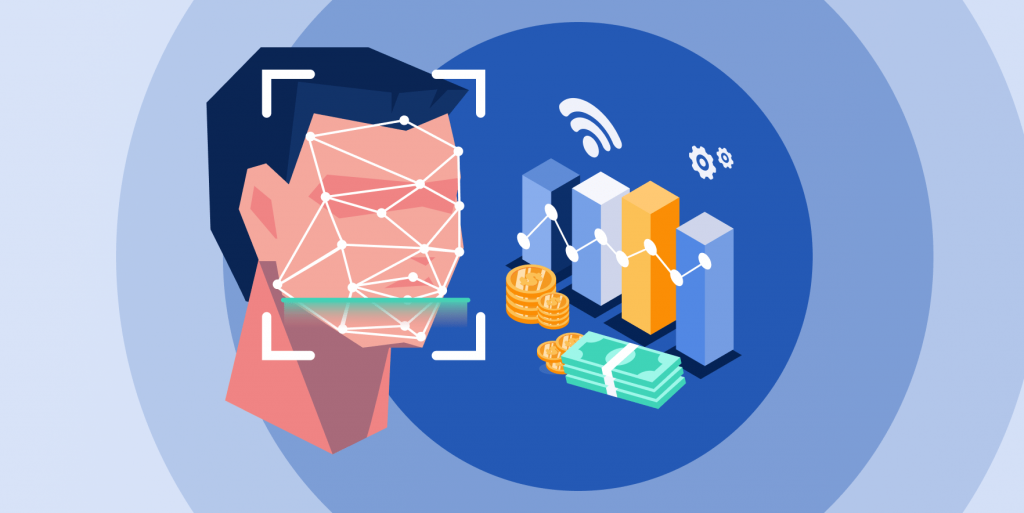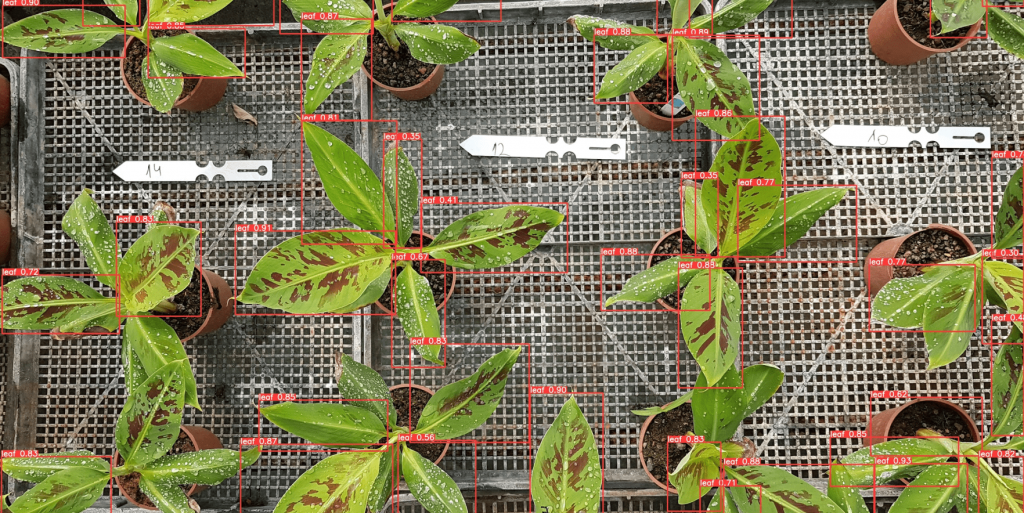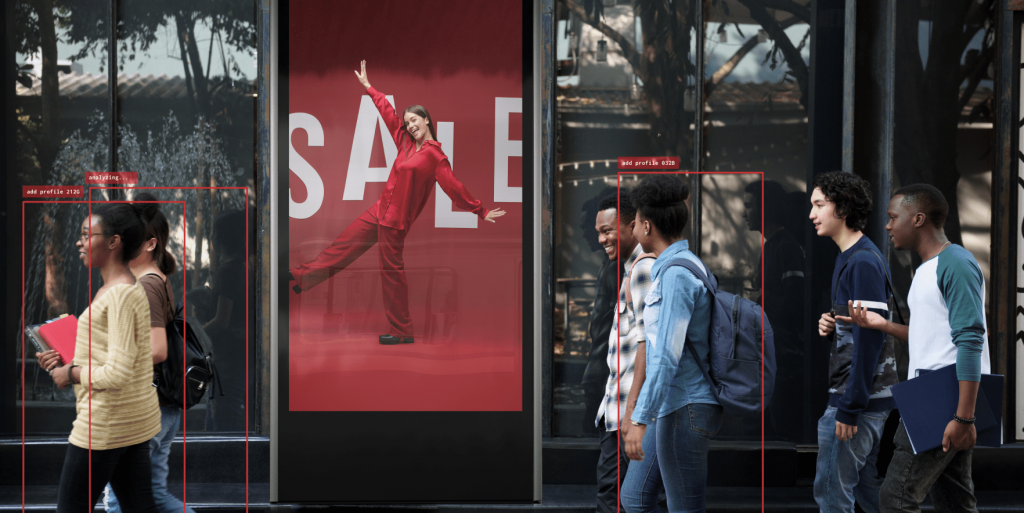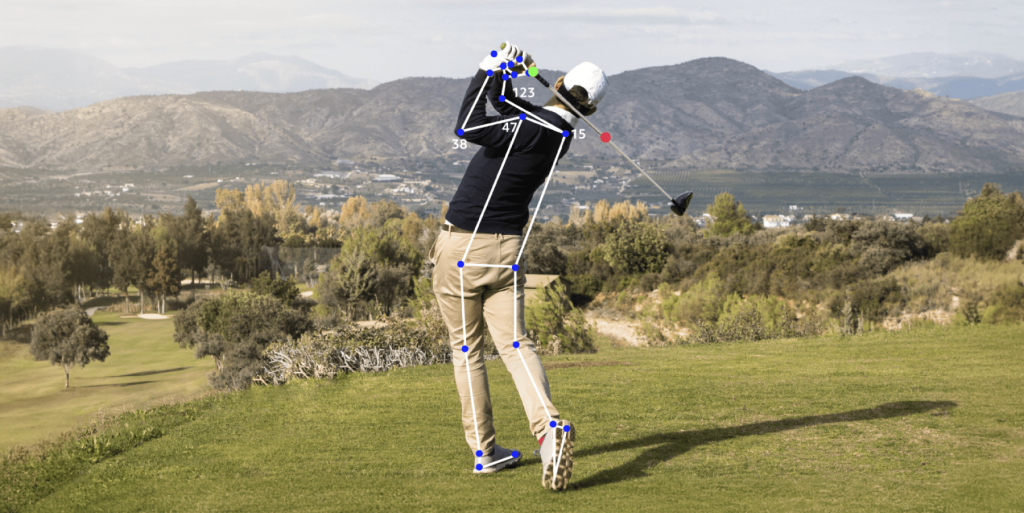Table of Contents
Alongside artificial intelligence, recognition of images has become an integral part of modern technology, enabling machines to “see” and understand visual data. Its applications span across various industries, such as ecommerce, agriculture, and healthcare, offering significant benefits to companies. According to Statista’s market research, the demand for image recognition technology will steadily grow, reaching a market volume of approximately $22.64 billion by 2030.

This article covers the core concepts of image recognition, how it works, the benefits of its implementation for businesses, and some real-world use cases.
To start off, let’s take a moment to define what is image recognition and what makes it such a remarkable technology.
What is image recognition?
Image recognition is the ability of computers to identify and classify specific objects, places, people, text, and actions within digital images and videos. It allows software to detect, analyze, and understand visual content by comparing it to learned data, much like how humans interpret what they see. This technology, a key application of computer vision, operates without human supervision, enabling the automatic extraction and analysis of details from images and videos.
Image recognition is something we encounter practically every day, whether it’s searching by a photo on Google or unlocking a phone using a facial recognition function. But how does it all work?
How does image recognition work?
As we mentioned earlier, image recognition is a subset of computer vision, which is a broader field of artificial intelligence. To recognize objects and differentiate a face from a vase, it utilizes machine learning and, more specifically, deep learning. Deep learning involves neural networks — complex algorithms trained on massive datasets of labeled images. These neural networks learn to recognize patterns and extract features like edges, shapes, textures, and colors, building up a visual vocabulary piece by piece.
Deep learning models, particularly Convolutional Neural Networks (CNNs), are widely used in image recognition. CNNs are designed to automatically and adaptively learn spatial hierarchies of features from input images.
Here’s where it gets really interesting: these algorithms don’t just memorize what a cat or a tree looks like. They learn to understand the fundamental building blocks that make up those objects and scenes. For instance, a CNN might first detect simple edges and textures, then combine these into more complex shapes, and finally recognize entire objects. When these networks encounter a new image, they can break it down into its component parts and reassemble the pieces to identify what’s in the picture.
The typical deep learning process for image recognition includes the following:
Data gathering and preparation
The first step in the deep learning process for image recognition is the gathering and preparation of data. This involves collecting a large and diverse dataset of images that represent the various categories or classes that the model will be trained to recognize. The quality and diversity of the dataset are critical factors that can significantly impact the performance of the trained model. Additionally, preprocessing techniques such as normalization, resizing, and data augmentation are often applied to the images to ensure uniformity and enhance the robustness of the model.
Training the neural network
Once the dataset is prepared, the next step is to train the neural network using the collected data. This involves feeding the images into the network and adjusting the network’s parameters through a process known as backpropagation. During training, the network learns to identify patterns and features within the images that are indicative of the different classes. The network’s parameters are optimized iteratively through the use of optimization algorithms such as stochastic gradient descent, enabling the network to gradually improve its ability to accurately classify the images.
Testing the data
After the neural network has been trained, it is essential to evaluate its performance on a separate set of images that it has not seen before. This testing phase helps to assess the model’s generalization capabilities and provides insight into its accuracy and reliability.
Types of image recognition
There are three main approaches to training image recognition systems: supervised learning, unsupervised learning, and self-supervised learning. Let’s examine each.
Supervised learning
Supervised learning is a popular approach in image recognition, where the algorithm is trained on a labeled dataset. This means that each input image is accompanied by a corresponding output label, such as identifying objects in the image. Through exposure to a vast collection of labeled images, the algorithm learns to recognize patterns and features associated with different objects. This type of learning is widely used in applications like facial recognition, object detection, and image classification.
One of the key advantages of supervised learning is its ability to make precise predictions based on the labeled training data. However, its effectiveness heavily relies on the quality and diversity of the labeled dataset. Additionally, supervised learning may struggle when faced with new, unseen data that differs significantly from the training set.
Unsupervised learning
Contrary to supervised learning, unsupervised learning does not rely on labeled data. Instead, the algorithm identifies patterns and structures within the input images without explicit guidance. This makes it useful for tasks such as clustering similar images, identifying anomalies, and extracting meaningful features from the data.
Unsupervised learning techniques enable machines to uncover hidden patterns and relationships within image datasets. While unsupervised learning can be advantageous in scenarios where labeled data is scarce, the interpretability of the learned features and the output quality heavily depend on the algorithm’s capability to discern meaningful patterns from the input data.
Self-supervised learning
Self-supervised learning is a relatively newer approach that combines aspects of both supervised and unsupervised learning. In this method, the algorithm generates its own labels from the input data, effectively creating a supervised learning scenario from the raw, unlabeled images. Common self-supervised tasks include image inpainting, colorization, and predicting missing parts of an image.
This approach offers the advantage of leveraging vast amounts of unlabeled data while benefiting from the structured learning process of supervised techniques. By learning to predict missing or corrupted parts of an image, the algorithm can better understand visual features and contextual relationships within the data.
Prominent image recognition use cases
The importance of image recognition work is hard to underestimate. Now, it can even be trained to identify objects and patterns that the human eye may not catch. Powered by artificial intelligence and machine learning, it has revolutionized numerous industries and processes, offering a wide array of applications that continue to shape the way we interact with the world.
Let’s explore some of the prominent image recognition use cases:
Facial recognition
Facial recognition technology enables quick and accurate identification of individuals by analyzing facial features, helping in security screenings, identity verification, and access control. For example:
- Facial recognition is used at airports, offices, and secure facilities to let authorized people in. It scans faces to make sure only the right people can enter.
- Some security cameras use facial recognition to spot known troublemakers or missing persons. It helps keep public places safer.
- Social media sites like Facebook use facial recognition to suggest tags for people in photos. It helps users identify friends in their pictures.
- Some smartphones use facial recognition to unlock the device. The camera scans the owner’s face and unlocks the phone if it matches the stored face data.
- Police departments use facial recognition to find suspects in surveillance footage. It helps them solve crimes faster by identifying individuals.
Image search
Image recognition powers sophisticated image search engines that allow users to search for similar images based on content rather than keywords. This technology is utilized in ecommerce for visual search, where users can find products similar to an image they upload. For instance, if you see a beautiful landscape in a photo, you can use image search to find similar destinations or hotels to visit.
Medical diagnosis
In the healthcare sector, image recognition plays a crucial role in medical imaging analysis. Radiologists and doctors use this technology to interpret X-rays, MRIs, and CT scans with greater accuracy, aiding in the early detection of diseases and improving patient outcomes.
For example, image recognition helps doctors detect early signs of cancer in medical images like mammograms and CT scans. It can highlight abnormal growths or tumors that might be difficult to spot. This early detection leads to timely treatment and better chances of recovery for patients.
Quality control
Manual inspection is hard and time-consuming. Automated systems can inspect products on production lines for defects, ensuring consistency and adherence to quality standards. This reduces errors and improves overall product quality.
Content filtration & monitoring
Social media platforms and online content providers utilize image recognition for content moderation. This technology helps filter out inappropriate or harmful content, such as explicit images or hate speech, ensuring a safer online environment for users.
Fraud detection
The integration of AI-powered photo recognition tools can significantly streamline and bolster the process of detecting fraud. This technology analyzes images or videos to detect suspicious patterns, anomalies, or discrepancies that may indicate fraudulent behavior.
For example, surveillance cameras equipped with image recognition algorithms analyze customer behavior and detect unusual patterns, such as multiple returns of high-value items within a short period, signaling potential fraud.
AI image identification is also useful in identifying deepfakes. For instance, it can distinguish unusual and inconsistent facial features, unnatural movements, and other indicators of a deepfake to prevent identity theft or other malicious actions.
Expert Opinion
Nowadays, the problem of computer vision remains one of the most popular among businesses. It’s not a surprise because visual detection can benefit many industries due to its high automation capabilities. If five years ago, the task was to reach people’s level of visual perception (to save time and money); now the task is to make it even better (to avoid people’s perception biases). Last year was also important for this branch of AI because LLMs can contribute not only to text but also to image processing. This is a huge step forward in the development of AI, impacting many industries as well.
Examples of image recognition applications in real-life
As we’ve already mentioned, the application of image recognition comes in many forms and offers numerous ways to improve our lives and businesses. Here are a few real projects from SoftTeco that vividly demonstrate the benefits of this technology.
BananaAi: an AI-based solution for banana leaf disease detection
The BananaAi project is a good example of how image recognition can be applied in agriculture.


Upon the client’s request, SoftTeco has successfully developed and fine-tuned an AI-powered classification model for monitoring and overseeing the growth of banana trees in greenhouses and plantations. The main goal was to streamline the tasks of agronomists by automating routine processes and promptly identifying any potential issues.
Therefore, we created a computer vision system capable of autonomously examining banana seedling leaves and identifying signs of damage. To achieve this, SoftTeco utilized advanced object detection techniques and deep learning algorithms to train a model specifically designed for recognizing damaged banana leaves. This module diligently inspects real-time photos of banana tree leaves within the greenhouse, categorizing any observed leaf damage.
Expert Commentary
Throughout the project, we managed data collection, processing, and annotation, crafting custom datasets tailored for training and testing our model. As a result, the model can now identify and distinguish various types of damage, generating a comprehensive report that provides a detailed assessment of the plant’s overall condition based on the analyzed images.
SeeDoo: a computer vision device for target audience analysis
Image recognition technology has wide applications in the retail and ecommerce sectors. One of our projects, SeeDoo, is an excellent example of how this technology can help businesses personalize their advertisements.


Our client sought our expertise in developing an on-premises device capable of detecting individuals and delivering relevant advertisements on DOOH displays in transportation hubs and outdoor areas. The main goal was to analyze captured images, extract key attributes of the audience, and present targeted advertisements for optimal effectiveness.
Expert Commentary
The device itself is a compact on-premises box with a high-resolution camera. It’s strategically positioned near DOOH displays to capture images of individuals within its coverage area. The device was equipped with NVIDIA’s Jetson mini-computer, so we converted and optimized our machine learning models into ONNX and TensorRT formats. This optimization significantly boosted data processing speed, enabling real-time predictions.
We worked closely with the client’s team and developed computer vision software for the device. This software uses deep learning for object detection, tracking, and classification. Photo recognition technology accurately analyzes visual data, identifies specific attributes, and displays targeted ads on nearby screens based on requirements. This method tailors ads directly to the audience, making them more impactful and effective.
Golf Club: an AI-powered analyzer of golf players
Image recognition technology can significantly improve the quality of products in specialized manufacturing industries. As an example, let’s consider another interesting project by SoftTeco – Golf Club.


Our client, a custom golf club manufacturer, approached us with an innovative idea: to develop an AI-based solution that will analyze players’ positions and strokes to help them design personalized golf clubs.
We developed an AI-powered solution that can see and measure how golfers hold their clubs and how they swing them. It then uses this information to figure out the technical specifications needed to manufacture customized clubs.
This program works by taking pictures either from a phone or a special camera. With these pictures, the client can make clubs that match how hard players hit the ball, how they stand, and how they swing.
To make this work, we developed two smart computer models. One model figures out where the player’s hand and club are, and the other model figures out the club and separates it from everything else in the picture. Together, these models get all the info needed to make a custom golf club that fits just right. This technology helps the program see the club clearly, even among other things in the picture, and know the difference between the player’s arm and the club.
To sum up
AI picture recognition is significant, offering numerous benefits like efficiency improvements and industry innovation. The future of this technology looks promising, as recognition of images provides new opportunities to leverage it to your advantage each year. If you have ideas to explore, you need a skilled partner like SoftTeco. Our team excels in AI and ML technologies and is ready to tackle any challenges.


Comments